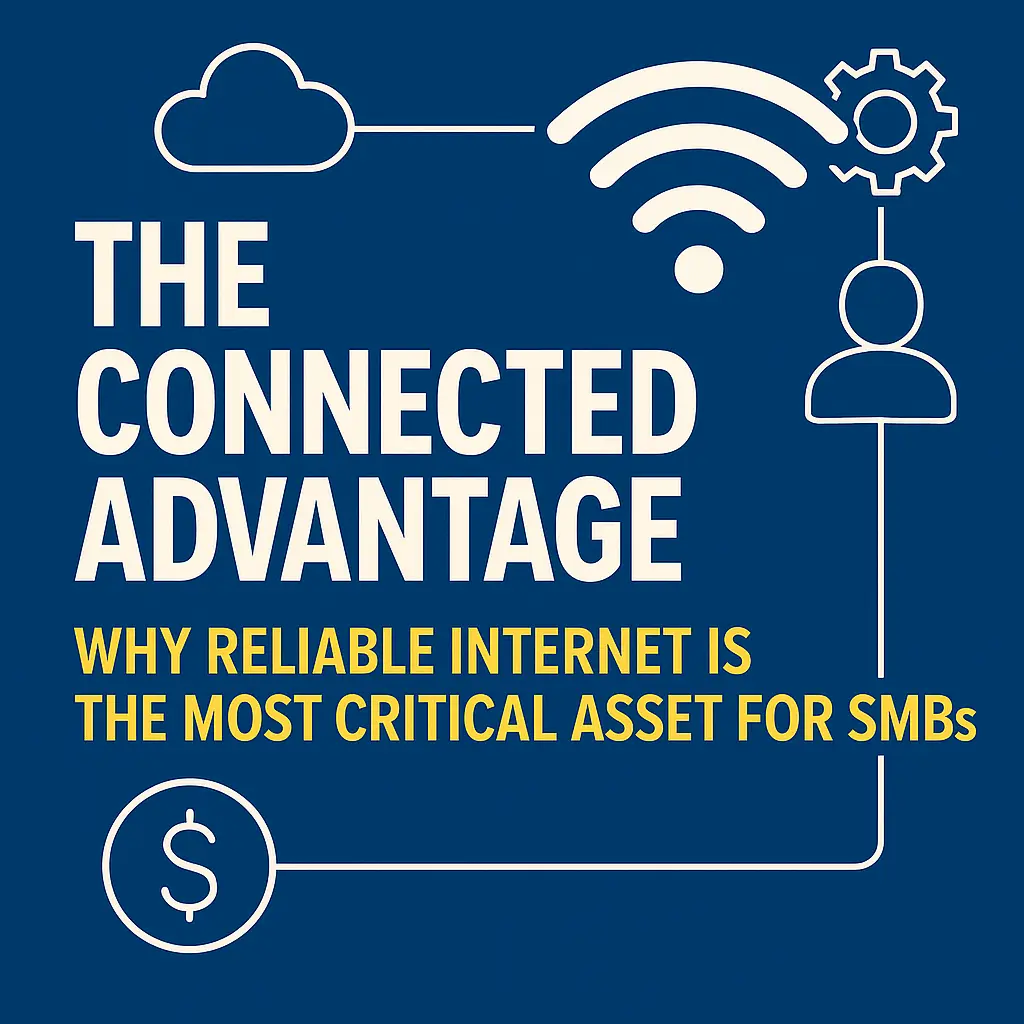
For most small and medium-sized businesses (SMBs), internet service is treated like electricity — a simple utility. But the reality is very different. Connectivity is no longer optional; it’s the foundation of modern business operations. From point-of-sale systems and CRMs to cloud applications and VoIP phones, your business depends on a fast, reliable connection to function at all.
When that connection goes down, the cost isn’t just inconvenience — it’s lost revenue, idle employees, frustrated customers, and damage to your reputation. In today’s digital economy, your internet connection is not just a bill to be paid; it’s a strategic asset.
Industry research shows that network downtime costs SMBs anywhere from $137 to $427 per minute on the low end, and in some cases over $10,000 per hour. For nearly 98% of businesses, downtime can exceed $100,000 per hour.
Why such a wide range? Because the real cost depends entirely on how your business operates:
Downtime is not an “if” problem — it’s a “when.” The question is how much it will cost, and how prepared you are.
Not all internet is created equal. Here’s a quick breakdown of common options for SMBs:
For SMBs, the right choice usually comes down to balancing availability, reliability, and cost. But choosing a connection is only step one.
One connection = one point of failure. If your primary internet goes down, your business goes down with it. That’s why redundancy isn’t a luxury — it’s insurance.
Common redundancy strategies include:
Think of redundancy as peace of mind. With failover in place, an outage becomes a blip instead of a disaster.
Reliable internet doesn’t just prevent losses — it unlocks productivity:
Every second saved from lag, frozen dashboards, or dropped calls adds up to what we call the “productivity dividend.” For lean SMBs, this competitive edge is priceless.
Connectivity is evolving fast. The rise of 5G, edge computing, and AI-driven network monitoring is changing the game.
The takeaway? Internet strategy is no longer static. Businesses must think long-term, choosing providers and solutions that can scale, adapt, and protect.
Reliable internet is not just an IT issue — it’s the engine of your business. Downtime is too costly, customers are too unforgiving, and competition is too fierce to leave connectivity to chance.
At TTSX, we help SMBs assess risk, compare options, and build strategies that combine speed, resilience, and security. Whether that’s fiber with a wireless backup, or a full SD-WAN deployment with integrated cybersecurity, our role is to make sure your connection works as hard as you do.
👉 Stay tuned here for more insights, or reach out if you’d like to explore your options.